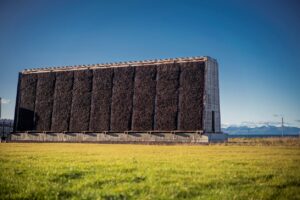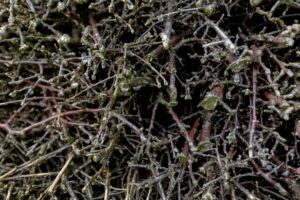Serendipity made me purchase Alder. I was in the RIAS bookshop in Rutland Square to buy a much more prosaic Minor Works building contract when I spotted Alder and on impulse added it to my purchase. I had no idea what it was – there was little to go on except for some beautiful photographs of buildings in stunning Scottish locations.
I have since discovered that this is the third edition of an annual magazine founded and published byMary Arnold-Forster Architects. Mary has brought together a group of eclectic writers looking at buildings in terms of place, society and culture – a refreshing change from the typical architectural magazine which tends to focus on iconic buildings or starchitects. It is as much about landscape, patterns of life and politics as it is about buildings.
In the final piece, chairman of Reiach and Hall Architects and visiting professor of architecture, Neil Gillespie admits that “The risk for Alder is that it is seen to celebrate the private worlds of the affluent and privileged while mainstream practice shrugs its weary shoulders”.
But he hopes that future issues can address this by featuring a more diverse range of work – presumably along the lines of the fascinating article about the social upheaval of the Thurso community caused by the rise and fall of the nuclear reactor at Dounreay written by former FT journalist and presenter of highly-rated podcast A Long Time in Finance, Jonathan Ford.
Ford writes sensitively about how Dounreay was treated as an out of the way experiment – both social and scientific – which saw the high school become one of the largest in Scotland. “The paternalist embrace of the atomic establishment has long gone, replaced by transactional decommissioning contractors,” writes Ford. 
A standout building which features in the third issue of Alder is the Blackthorn salt graduation tower at Ayr docks, designed to turn the sea salt into the culinarily renowned Blackthorn Salt Crystals. The monumental Scottish Douglas fir and larch structure, known locally as the “Tower of Thons,” is infilled with bundles of locally-grown Blackthorn, reminiscent of the heather roofs of traditional black houses.
The buildings depicted in the third issue remind me of the sort of buildings that I used to nominate for awards during my time as a Civic Trust assessor. I tried to reward the more sensitive designs that created beautiful, subtle, human spaces – ones that did not need signs, as the architecture itself leads one around the building. Disappointingly, but unsurprisingly, my nominations were often overturned by the London-centric judging panel, who wanted more iconic winners.
It is a delight to discover this magazine, and I congratulate all those involved. Alder challenges architects to be less introspective, following in the tradition of Patrick Geddes.
 A subscription to Alder is on my Christmas list – any takers?
A subscription to Alder is on my Christmas list – any takers?

